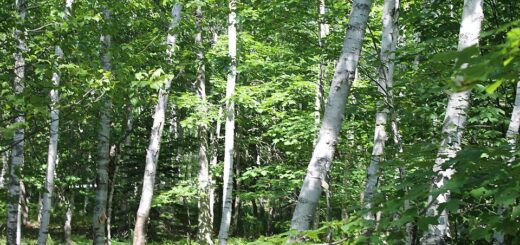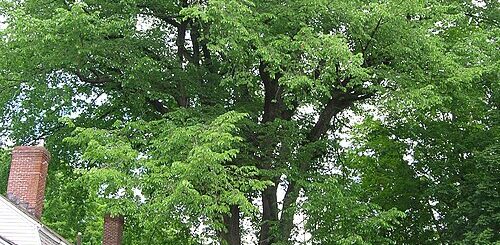Balsam Fir Tree – Nature’s Fragrant Evergreen
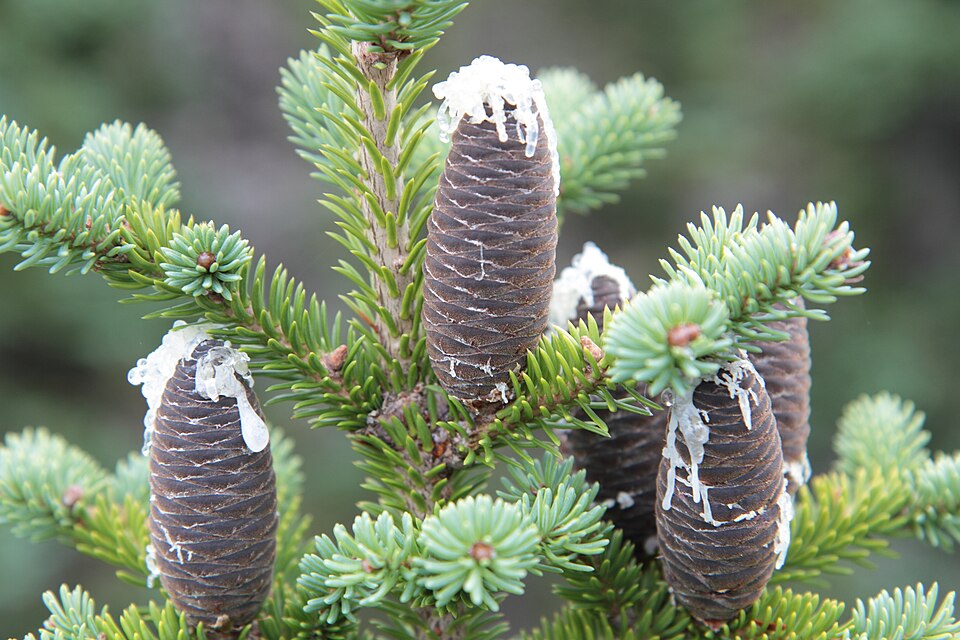
If you’ve ever walked through a northern forest and caught a whiff of that fresh, clean, “Christmasy” scent in the air, chances are you’ve been near a Balsam fir. With its distinctive aroma, soft needles, and classic conical shape, the Balsam fir (Abies balsamea) is one of the most beloved trees in North America, not just by people, but by wildlife too.
🌲 Meet the Balsam Fir
Native to the northeastern United States and most of Canada, the Balsam fir thrives in cold climates and high elevations. It’s a member of the pine family and can live up to 200 years in the right conditions. It typically grows to about 45–75 feet tall, with a narrow, spire-like crown that gives it that “perfect Christmas tree” silhouette.
The Balsam fir’s needles are flat, soft to the touch, and dark green on top with two silvery-white lines on the underside. Unlike many other conifers, the needles are arranged in a more orderly fashion along the twig, giving the tree a tidy and symmetrical appearance.
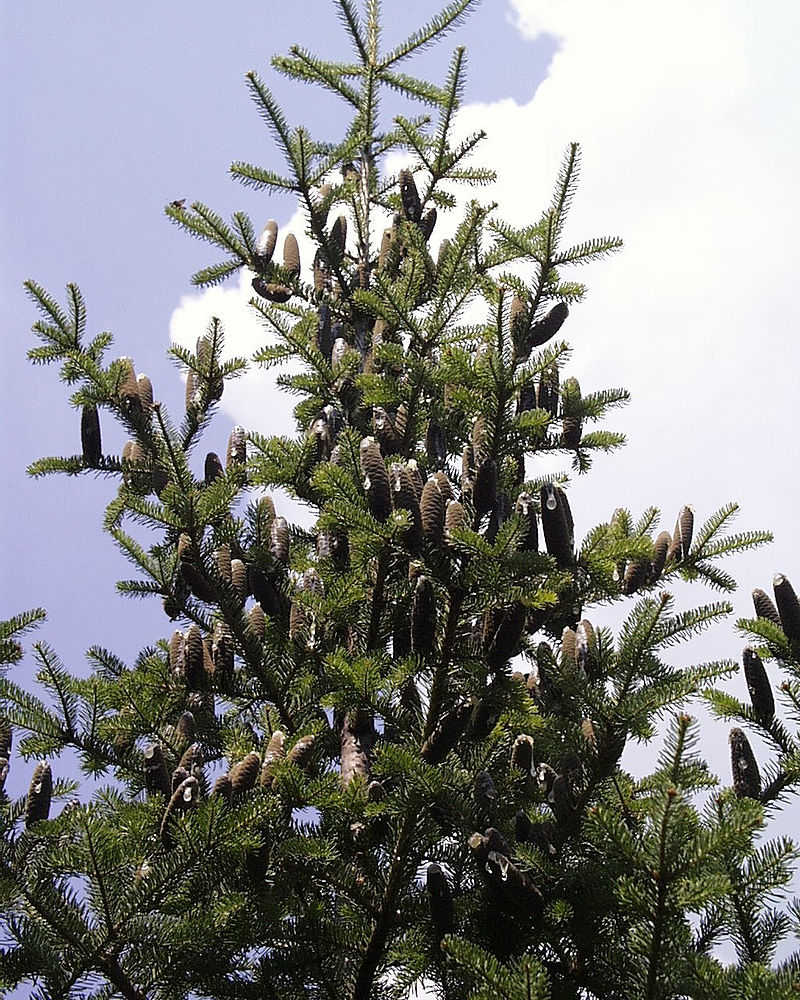
Balsam fir tree with cones, Sherburne National Wildlife Refuge, Minnesota. – Creative Commons | Author: U.S. Fish and Wildlife Service – Source: https://commons.wikimedia.org/wiki/File:Abies_balsamea.jpg
🌿 A Tree Full of Fragrance
One of the most iconic features of the Balsam fir is its rich, balsamic scent. This comes from resin-filled blisters on its bark. If you gently press one (or accidentally brush against the tree), you’ll release a sweet-smelling sap that’s been used in everything from traditional medicine to incense.
In fact, Native American communities have long valued Balsam fir resin for its healing properties. It was often used to treat wounds, burns, and respiratory ailments.
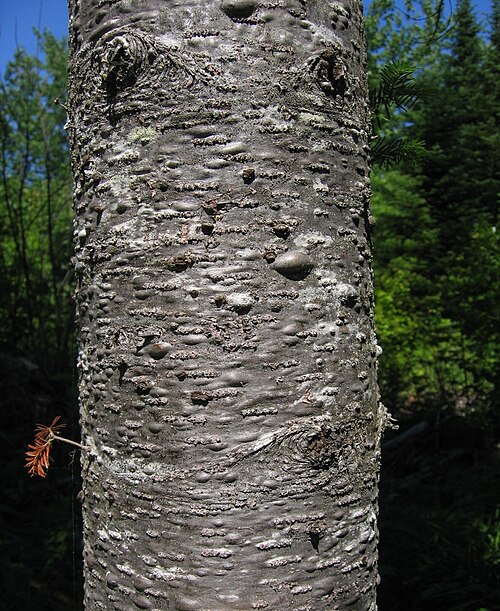
Balsam fir bark, on young tree 15 cm diameter. Creative Commons | Author: Keith Kanoti, Maine Forest Service, United States
🐿️ Wildlife & Ecology
Balsam fir forests provide vital shelter and food for a variety of animals. Moose and deer munch on its foliage in the winter, while birds like chickadees and crossbills use the tree for nesting. The dense cover of Balsam fir forests is especially important for species like the Canada lynx and snowshoe hare, which rely on this habitat for protection and survival.
🎄 The Christmas Connection
If you’ve ever had a real Christmas tree, there’s a good chance it was a Balsam fir. Its symmetrical shape, sturdy branches, and long-lasting fragrance make it a holiday favorite. Plus, it holds onto its needles better than many other species, which is always a win when you’re trying to keep your living room floor clean during the holidays!
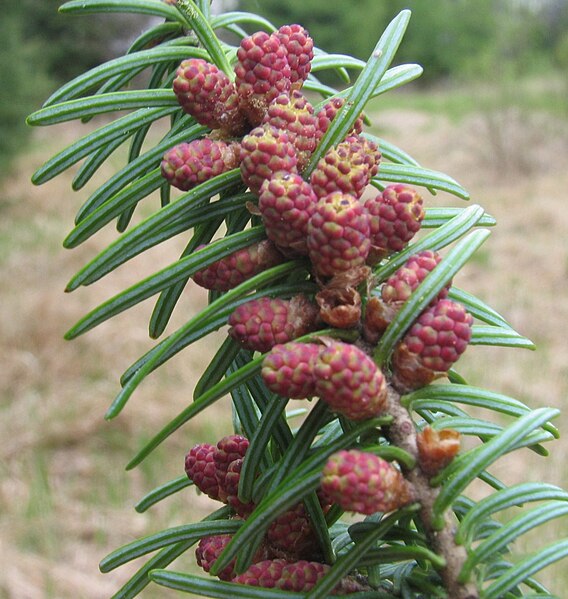
Balsam fir pollen cones. Creative Commons | Author: Joseph O’Brien, USDA Forest Service, United States – Source: https://commons.wikimedia.org/wiki/File:Abies_balsamea_pollen_cones2.jpg
🌎 Conservation & Climate
Like many tree species, Balsam firs are facing challenges due to climate change and pests. Warmer winters and shifting weather patterns can stress these trees, making them more vulnerable to insects like the spruce budworm. Sustainable forestry practices and conservation efforts are helping maintain healthy Balsam fir populations in the wild.
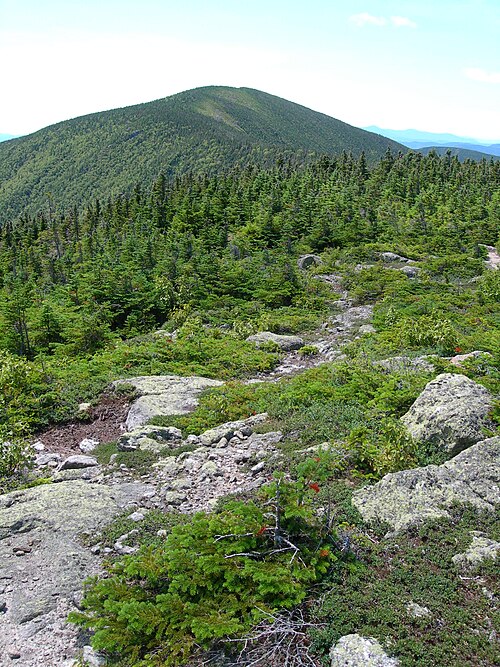
Carter Dome seen from Mt. Hight, NH, with Balsam fir krummholz. Creative Commons | Author: Petersent – Source: https://commons.wikimedia.org/wiki/File:Carter_Dome_seen_from_Mt_Hight.JPG
The Balsam fir is more than just a pretty tree
It’s an integral part of northern forest ecosystems, a symbol of holiday cheer, and a source of natural healing. Whether you’re hiking through the woods, decorating your home for the holidays, or simply enjoying the outdoors, take a moment to appreciate this fragrant evergreen and all that it offers.
References:
https://en.wikipedia.org/wiki/Abies_balsamea

